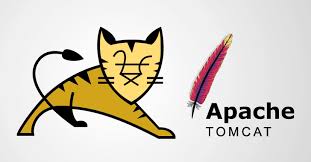Apache Tomcat Server
 Abhishek Dandriyal
Abhishek Dandriyal
Tomcat is an open-source web server and servlet. The Apache Software Foundation has developed it. It is used widely for hosting Java-based applications on the web. It is built on Java technologies and implements the Java Servlet and JavaServer Pages (JSP) specifications. Tomcat acts as a bridge between web servers and Java-based applications, facilitating the execution of dynamic content and processing client requests.
How Does Tomcat Work?
Tomcat follows a modular architecture comprising connectors, containers, and the Catalina Servlet container. This architecture enables Tomcat to efficiently handle client requests and generate responses.
Connectors are in charge of accepting and processing requests that the clients sent to Tomcat. In order to have a connection with the client, different protocols are used by the connectors. These connectors can be HTTP or HTTPS. They handle tasks like connection management, request parsing, and data transmission.
Once a request is received, connectors pass it to the appropriate container based on the requested URL. Containers manage the lifecycle of web applications and execute Java servlets or JSP code to generate responses. They provide an environment for running web applications, managing resources, and handling concurrent requests.
The Catalina Servlet container, in particular, is responsible for mapping requests to the appropriate servlet and managing the servlet's life cycle. It handles the process of generating dynamic content by executing servlet code and producing the response that is sent back to the client.
Tomcat's modular architecture allows for flexibility and extensibility. Developers can add or customize components to enhance the functionality of Tomcat according to their specific requirements.
How to Install Tomcat on Windows?
Step 1. Command-line installation
Installing Tomcat on Windows is easy. It is a step-by-step process. Go to the Apache Tomcat website. Once you go there, check for the recent Tomcat version and download it. You should check what your system needs before you download it. Also, check the capacity of your system.
When the download is done, the downloaded archive should be extracted. Save the downloaded file in a directory on your computer.
This directory will serve as the Tomcat installation directory.
To configure Tomcat, you need to set up essential environment variables.
The JAVA_HOME variable should indicate where the Java Development Kit (JDK) is located on your system. The CATALINA_HOME variable should point to the Tomcat installation directory. These variables are crucial for Tomcat to locate the necessary files and execute them properly.
Step 2. Start Tomcat
After setting up the environment variables, you can start Tomcat. You can start Tomcat in different ways. It can be run as a service or the startup scripts that are given can be used. You can also start it in manual mode from the command line.
When Tomcat starts, it binds to a specific port, typically 8080 by default. By launching a web browser and going to http://localhost:8080/, you can view the deployed applications and Tomcat server through this port.
How to Deploy an Application in Tomcat?
Deploying a web application in Tomcat involves a straightforward process. Tomcat uses a concept called the Web Application Archive (WAR) file to package and deploy web applications.
You first need to build an application as a WAR file in order to get it deployed.
The WAR file contains all the necessary components of your web application, including servlets, JSP files, HTML files, and resource files.
Once you have the WAR file, copy it to the "web apps" directory within the Tomcat installation directory. Tomcat automatically deploys the application by unpacking the WAR file and creating the necessary directory structure.
By default, the context path of the deployed application is derived from the WAR file name. For example, name your WAR file myapp.war to access the application at http://localhost:8080/myapp/
Tomcat provides various configuration options to customize the deployment process. You can configure additional settings using XML files or annotations, such as specifying context parameters, defining servlet mappings, or configuring data source connections.
Once the application is deployed, you can access it through the assigned context path and interact with its functionality through the web browser.
How to start the Tomcat server
Step 1:- Go to Apache Tomcat folder
step 2: - Enter bin folder and open the terminal for bin folder
sh startup.shStart: ./catalina.sh run -- to start the Apache Tomcat server
stop: sh shutdown.shStop: Press ctrl + c
Maven Commands
Compile
Command: mvn clean compile -U
Compiles the code but doesn’t generate the war file
Package
Command: mvn clean package -Dmaven.test.skip=true or mvn clean package -U
To create the war file out of frontend code in the target directory e.g. xyz.war The war files are deployed to the tomcat’s as web apps directory Use -Dmaven.test.skip=true to skip the test code which fails
Subscribe to my newsletter
Read articles from Abhishek Dandriyal directly inside your inbox. Subscribe to the newsletter, and don't miss out.
Written by

Abhishek Dandriyal
Abhishek Dandriyal
Frontend Developer , I design and code user-friendly and responsive web applications and projects using,HTML5 , React /Redux MUI . I collaborate with backend developer, UI/UX designers, and project managers to deliver high-quality products that meet the clients' needs and expectations.